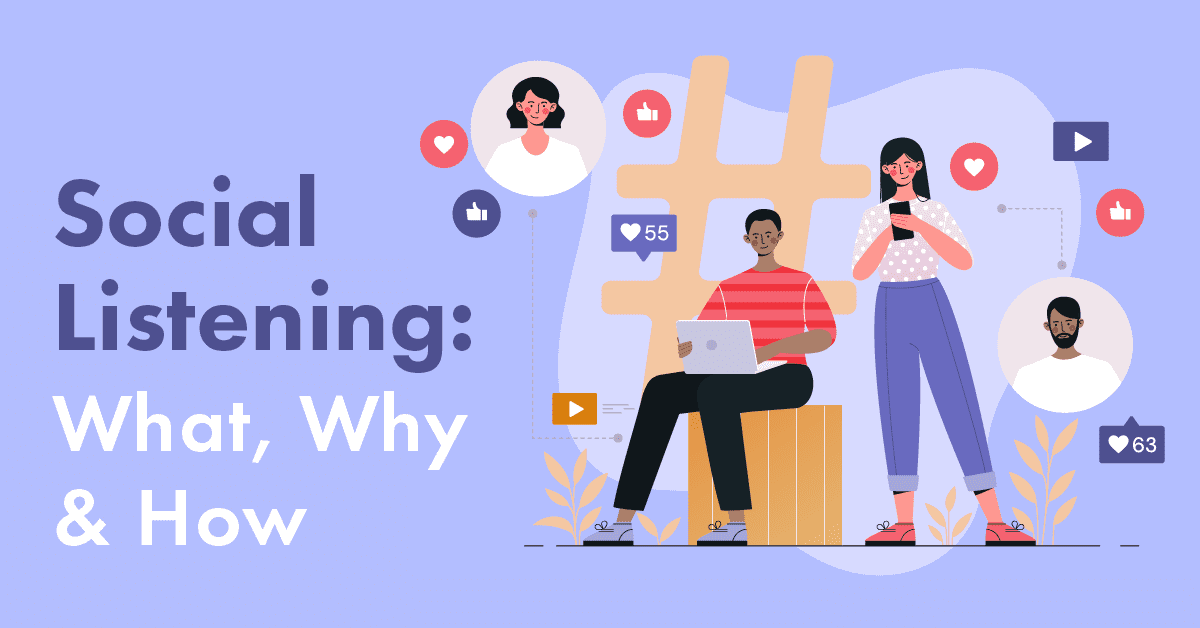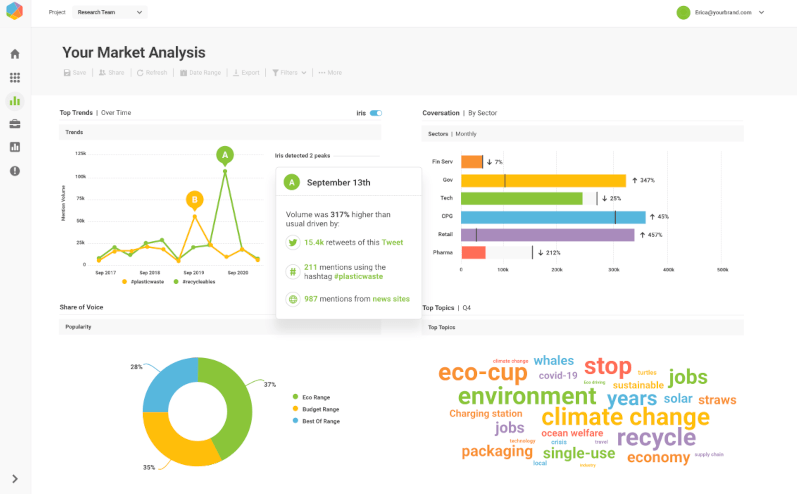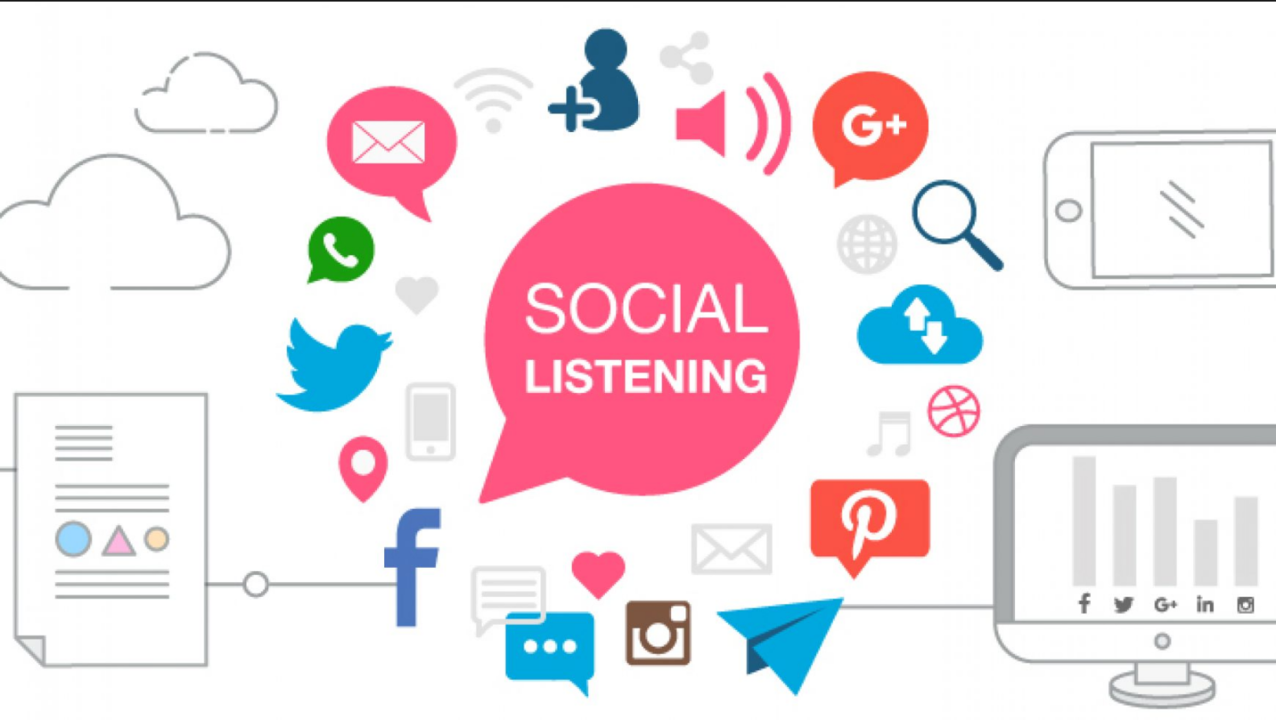In today’s digital age, where information travels at the speed of light, businesses need to be constantly in tune with their audience. Social media has become an integral part of our lives, and platforms like Twitter, Facebook, Instagram, and LinkedIn offer a wealth of valuable data about consumers’ preferences, opinions, and sentiments. Enter social listening strategy—a powerful tool that enables businesses to tap into this vast pool of information and gain valuable insights into their target market. In this article, we will explore the concept of what is social listening strategy, its importance, and how businesses can develop an effective plan to leverage this valuable data.
What is Social Listening Strategy: Leveraging Insights for Business Success

Understanding Social Listening
What is Social Listening?
Social listening, also known as social media monitoring, refers to the process of actively tracking and analyzing conversations, mentions, and trends across various social media platforms. This strategy allows businesses to gain a comprehensive understanding of how their brand, products, or services are perceived by their audience.
Importance of Social Listening Strategy
A well-executed social listening strategy can offer numerous benefits to businesses. By monitoring online conversations, brands can identify opportunities and challenges, enabling them to make data-driven decisions that resonate with their target audience.
Key Steps to Develop an Effective Social Listening Strategy
1. Define Your Objectives and Goals
Before diving into social listening, it’s essential to outline clear objectives and goals. Determine what you want to achieve through social listening. Whether it’s improving customer service, understanding sentiment toward your brand, or tracking the success of a marketing campaign, having well-defined goals will guide your strategy.
2. Choose the Right Social Media Platforms
Different social media platforms cater to different demographics and audiences. Select the platforms most relevant to your business and target audience. For instance, if you’re a B2B company, LinkedIn might be more suitable than Instagram.
3. Identify Relevant Keywords and Topics
Set up specific keywords and topics that are relevant to your business. These could include your brand name, product name, industry-specific terms, and even your competitors’ names. This will help you monitor conversations that directly impact your business.
4. Monitor and Analyze Conversations
Invest in social media monitoring tools that will help you track mentions and conversations around your selected keywords. Analyze the data regularly to identify patterns, trends, and potential opportunities for engagement.
5. Engage with Your Audience
Social listening is not just about passively monitoring. Engage with your audience by responding to their comments, queries, and feedback. Building a genuine connection with your customers will strengthen brand loyalty.
Benefits of Implementing a Social Media Listening Strategy
1. Understanding Customer Sentiment
Social listening provides valuable insights into how customers feel about your brand. Positive sentiment can indicate successful campaigns, while negative sentiment can alert you to potential issues that need addressing.
2. Enhancing Brand Reputation
By addressing customer concerns promptly and positively, you can improve your brand’s reputation. People appreciate brands that listen and respond to their needs.
3. Gaining Competitive Insights
Social listening not only tracks conversations about your brand but also about your competitors. This can help you identify gaps in the market or areas where you can outperform your rivals.
4. Improving Customer Service
Responding to customer feedback and complaints in real time can significantly improve customer satisfaction and loyalty.
Social Media Listening Tools

Social listening can be a complex process, but several tools and technologies can simplify the task for businesses:
- Social Media Monitoring Tools: Platforms like Hootsuite, Sprout Social, and AIM Insights help you track brand mentions, conversations, and relevant keywords across multiple social media channels.
- Sentiment Analysis Tools: Tools like Brandwatch and Talkwalker use natural language processing to analyze the sentiment behind social media mentions, whether positive, negative, or neutral.
- Data Analytics Platforms: Solutions like Google Analytics and Adobe Analytics provide in-depth data analysis, offering valuable insights into consumer behavior and preferences.
Integrating Social Listening with Marketing and Business Strategies
Social listening should not operate in isolation but instead, be an integral part of a broader marketing and business strategy. The data collected through social listening can inform marketing campaigns, product development, and customer service initiatives.
Real-Life Examples of Successful Social Listening Strategies
Several brands have successfully leveraged social listening to their advantage. For instance, Taco Bell used social listening to identify a customer trend for a particular product, prompting them to bring it back on the menu and drive sales.
Challenges
While social listening offers a plethora of benefits, there are challenges to consider:
- Dealing with Negative Feedback: Negative feedback is inevitable, but how you respond to it matters. Address complaints professionally and empathetically to turn detractors into brand advocates.
- Managing Data Overload: With vast amounts of data available, managing and analyzing it efficiently can be daunting. Focus on key metrics and insights relevant to your goals.
- Balancing Automated and Manual Processes: Automation can streamline the social listening process, but human oversight is essential to avoid misinterpretation of data.
Future Trends
As technology continues to evolve, so will social listening. More advanced AI-driven tools will enable businesses to gain even deeper insights from social media data, providing a competitive edge in the market.
Conclusion
In conclusion, a robust social listening strategy is a valuable asset for any business looking to thrive in the digital landscape. By actively listening to their audience, brands can understand customer sentiment, enhance their reputation, and identify growth opportunities. Remember, social listening is not a one-time activity but an ongoing process that requires dedication and adaptability to keep up with the ever-changing digital landscape.
If you’re ready to take your social listening strategy to the next level and gain a competitive edge in the market, don’t hesitate to request a demo from AIM Technologies. Our cutting-edge social listening tools and technologies will empower your business to harness the power of social media data effectively. Don’t miss out on this opportunity to unlock valuable insights and elevate your brand’s presence in the digital sphere.
FAQs
Why is social listening essential for businesses?
- Social listening helps businesses understand their audience, improve customer service, and gain a competitive advantage by staying attuned to market trends and sentiments.
How often should I monitor social media conversations?
- Monitoring social media conversations regularly is crucial to stay updated with real-time insights. The frequency may vary based on your business needs and industry.
Can social listening help with crisis management?
- Absolutely! Social listening can detect potential crises early, allowing businesses to address issues proactively and manage their reputation effectively.
Is social listening limited to just monitoring brand mentions?
- No, social listening can also track conversations related to industry trends, competitors, and customer pain points, offering comprehensive market insights.
Are there any free social listening tools available?
- Yes, some social listening tools offer free plans with limited features. However, for a more comprehensive analysis, investing in premium tools is recommended.




